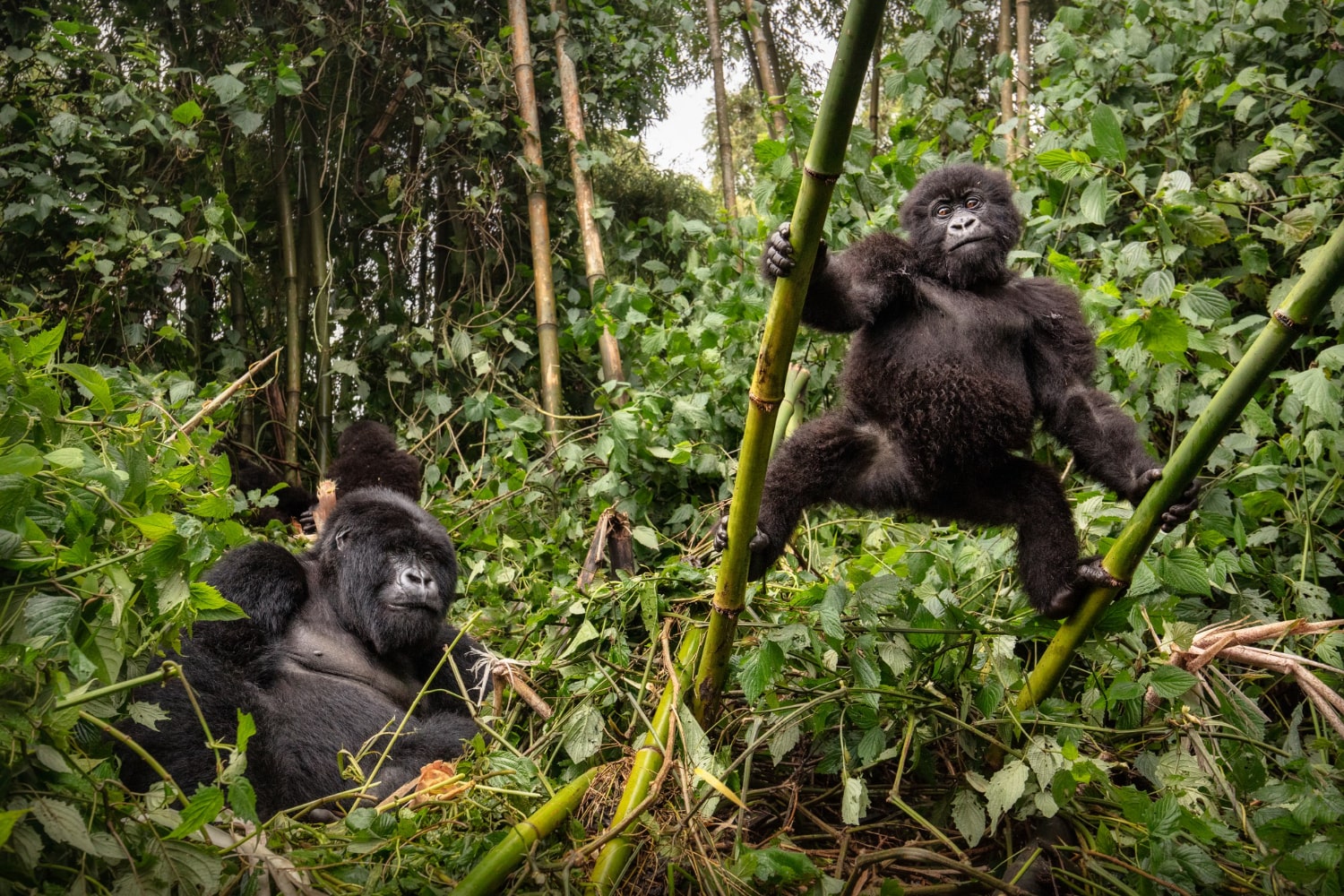Gorillas are among the most impressive and mysterious members of the primate world. They are some of the closest relatives of humans and can amaze with their intelligence, social organization, and physical strength. These animals live in the tropical forests of Africa and play an important role in maintaining ecological balance. Their lives are filled with details that often go unnoticed but are of great importance. Below you will find fascinating facts about gorillas that you might not know.
- Gorillas are the largest primates on Earth. Adult males can weigh more than 200 kilograms and reach over 1.8 meters in height when standing upright. Their physical strength is several times greater than that of a human. Despite this, they are mostly peaceful animals.
- There are two main species of gorillas, eastern and western. Each of them is divided into subspecies, the most famous being mountain gorillas and lowland gorillas. Each subspecies has its own characteristics in appearance and habitat. This makes them an extremely diverse group.
- Mountain gorillas live in the high-altitude forests of Rwanda, Uganda, and the Democratic Republic of Congo. They inhabit areas up to 4000 meters above sea level, where temperatures can be quite low. Their thick fur helps them withstand the cold climate. This subspecies is rare and endangered.
- Western lowland gorillas are the most numerous of all subspecies. They live in the dense tropical forests of Central Africa. Their population is larger than that of mountain gorillas, but they also suffer from poaching and habitat destruction. The survival of this species depends on conservation programs.
- Gorillas have a complex social structure. They live in groups called families or harems, consisting of one dominant male, several females, and their offspring. The leader of the group is called a silverback because of the distinctive silver-colored fur on his back. He is responsible for the safety and unity of the group.
- Gorilla infants are born very small, weighing only about two kilograms. In the first months of life, they cling constantly to their mothers. Only after about six months do they begin to move more independently. Care for the young continues for several years.
- The lifespan of gorillas in the wild is about 35–40 years. In captivity, under proper conditions, they can live longer, up to 50 years or more. Some individuals in zoos have become true long-lived animals. This is due to the absence of predators and access to medical care.
- Gorillas are primarily herbivorous animals. They feed on leaves, shoots, fruits, and roots. Sometimes they eat small insects. This diet makes them important for seed dispersal.
- The communication system of gorillas includes more than twenty different sounds. They use grunts, cries, barks, and even laughter in different situations. Sound signals are combined with gestures and facial expressions. This allows them to maintain strong social bonds.
- There are known cases of gorillas learning sign language in captivity. The most famous was the female Koko, who knew more than a thousand signs and understood many more English words. She was able to express complex emotions and concepts. This proves the high level of gorilla intelligence.
- Gorillas move by knuckle-walking, using their hands’ knuckles to support their weight. This method allows them to move effectively on the ground. Despite their size, they can run at fairly high speeds.
- In the behavior of silverbacks, displays of strength play an important role. They beat their chests, producing a loud sound that carries over long distances. Such a display usually serves to intimidate rivals or to warn of danger. It rarely ends in a fight.
- Gorillas rarely drink water directly. They obtain the necessary moisture from plants and fruits. In tropical forests, this is enough to maintain water balance. Only occasionally do they drink from puddles or rivers.
- Gorilla infants are known for their playfulness. They run, climb trees, and play with each other, developing skills needed in adulthood. These games also help to form social bonds within the group. Older individuals are tolerant of their antics.
- Gorillas play an important ecological role in their habitats. By dispersing seeds, they contribute to forest regeneration. Their activities help maintain plant diversity. This makes them an essential part of the ecosystem.
- The main threats to gorillas are poaching, deforestation, and disease. Viral infections such as Ebola have wiped out entire populations. Human activity leads to the loss of habitats. All this puts gorillas on the brink of survival.
- Despite their size and strength, gorillas are very peaceful animals. They avoid conflicts and prefer a calm coexistence. They show aggression only when the group is threatened. This makes them more similar to humans than one might think.
- Gorillas have excellent memory and can navigate large forest areas. They remember routes to food sources and safe places. This helps them survive effectively in difficult conditions. Such ability is further evidence of their intelligence.
- In the culture of many African peoples, gorillas are considered symbols of strength and wisdom. They are often depicted in folklore as powerful yet noble beings. In the modern world, they are also seen as symbols of nature conservation. Their image is widely used in art and cinema.
Gorillas are a true embodiment of the harmony of strength, intelligence, and social bonds. Their lives are filled with details that help us better understand evolution and humanity’s place in nature. These fascinating facts broaden our perception of the animal world and prove that many incredible discoveries still await us. You might not know that gorillas not only survive but also actively influence their environment.





